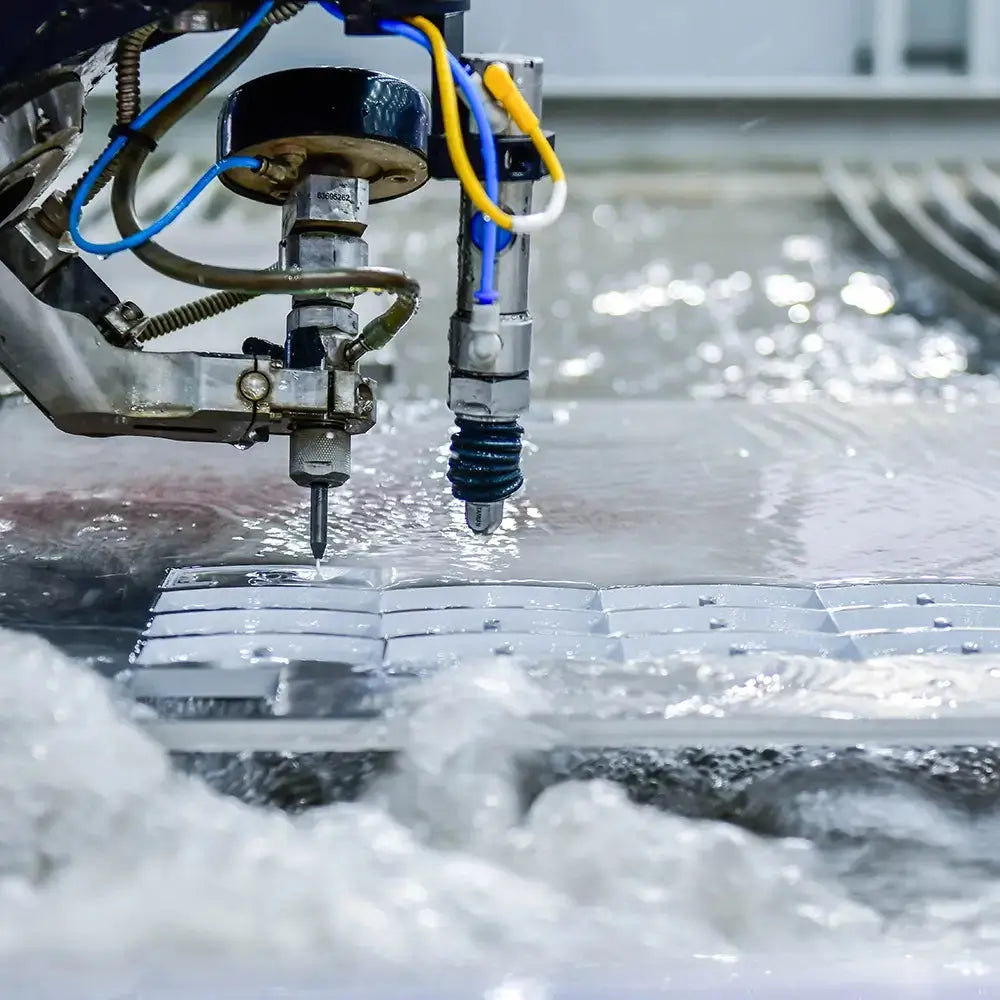
What is the Importance of Water Quality in Waterjet Cutting?
Why Water Quality Should Never Be Overlooked
Waterjet cutting is renowned for its cold-cutting precision and versatility across a range of materials. But behind every accurate cut lies a key variable often underestimated: water quality. At Misbell Group, we emphasize the crucial connection between water purity and equipment performance—because clean water doesn’t just cut better, it saves time, money, and machines.
What is Waterjet Cutting?
A Brief Overview
Waterjet cutting involves using high-pressure water—sometimes combined with an abrasive like garnet—to slice through materials such as:
- Metal
- Stone
- Ceramic
- Glass
- Composites
- Plastic
With pressures reaching up to 60,000 psi or more, even minor water impurities can lead to major performance issues or mechanical damage.
Why Water Quality Matters
More Than Just Clean Water
Water in a waterjet system is not just a carrier—it’s a mechanical agent. Poor water quality can result in:
- Premature wear on nozzles, orifices, and pump seals
- Reduced cutting efficiency
- Frequent maintenance and unexpected downtime
- Higher long-term operational costs
Ensuring proper water quality leads to:
- Sharper, more consistent cuts
- Longer machine and component lifespan
- Reduced repair and maintenance overhead
Key Water Quality Factors in Waterjet Cutting
1. Water Hardness
Impact: Minerals like calcium and magnesium can cause scale buildup and shorten the life of high-pressure components.
Solution: Use water softeners or pre-treatment systems to lower hardness levels before the water reaches the pump.
2. Total Dissolved Solids (TDS)
Impact: High TDS can clog nozzles, reduce abrasive performance, and erode sensitive parts.
Ideal Range: Under 100 ppm is generally optimal for most systems.
Solution: Install a reverse osmosis (RO) system to manage TDS levels effectively.
3. pH Balance
Impact: Acidic or alkaline water may corrode internal machine components over time.
Solution: Regularly monitor and maintain pH close to neutral (around 7).
4. Silica Content
Impact: Silica acts like micro-abrasive sand, accelerating wear on high-precision components.
Solution: Specialized filtration or sediment removal systems may be required based on local water conditions.
How to Maintain Proper Water Quality
1. Install a Complete Water Filtration System
Use pre-filters, carbon filters, softeners, and RO units as needed to treat incoming water before it reaches the high-pressure pump.
2. Conduct Routine Water Testing
Test your facility’s water for:
- Hardness
- TDS
- pH levels
- Silica content
Frequency: Weekly or monthly, depending on water source and system usage.
3. Maintain Your Filtration Equipment
Replace filters regularly and clean softener tanks and membranes to ensure ongoing effectiveness and avoid internal contamination.
4. Work with a Waterjet Specialist
Partner with a knowledgeable supplier like Misbell Group to analyze your water profile and recommend the right system setup and maintenance plan.
The Long-Term Benefits of Good Water Quality
- Reduced Downtime: Less wear and fewer unexpected failures
- Lower Maintenance Costs: Fewer replacements and extended component life
- Consistent Cutting Results: Higher edge quality and speed
- Extended Equipment Lifespan: Greater return on capital investment
Conclusion: Protect Your System, Enhance Your Results
Waterjet cutting delivers precise, heat-free results—but only if the water behind the pressure is properly treated. By actively managing water quality, you can optimize system performance, reduce operational costs, and prolong the life of your equipment.
At Misbell Group, we help you take the guesswork out of waterjet maintenance. Contact us today to learn more about water treatment solutions that are tailored to your equipment, your workflow, and your success.


